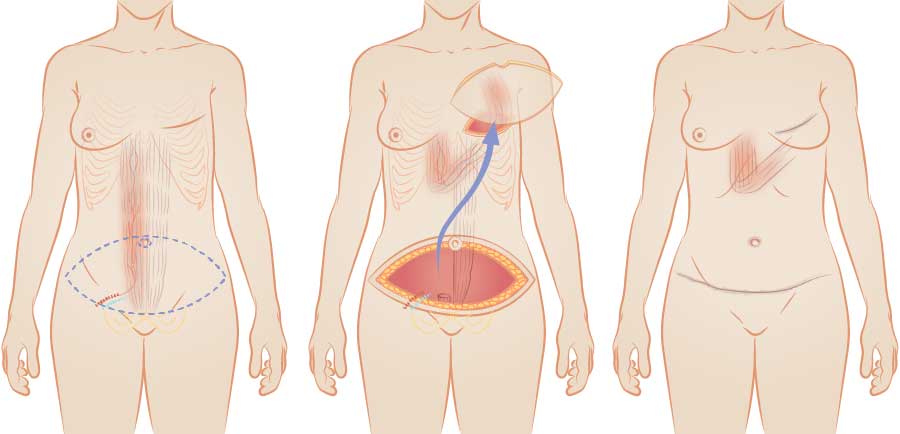— Verve Patient

TRAM flap
Sometimes a mastectomy or radiation therapy will leave insufficient tissue on the chest will to cover or support a breast implant. In these cases, breast reconstruction usually requires a flap technique, also known as autologous (your own tissue) reconstruction.
What Is a TRAM Flap?
Who Is a Good Candidate?
- You plan to have a mastectomy and do not want breast implants.
- Has history of radiation therapy.
- Has failed implant reconstruction and/or other autologous reconstruction.
- Has excess skin and tissue on the lower abdomen.
- You should be at or close to your ideal weight, with a BMI less than 35.
- The best candidates are non-smokers. Smoking increases the chance of complications including impairment in wound healing.
The Incisions
- A horizontal incision is made in the low belly near the pubic area. The length of the incision depends on the amount of skin that needs to be removed. A new opening will be made for the belly button. You will have a circular scar along the belly button.
- You will also have an elliptical incision on the breast where the new tissue will be placed.
FAQs
TRAM flap is an older procedure which uses the rectus abdominis muscle, lower belly skin and fat to create the breast mound. A DIEP flap uses the same lower belly skin and fat; however the entire muscle is preserved, the tissue is completely detached from the body then blood vessels are reattached in the chest to reconnect and create a breast mound.
Yes. You will stay in the hospital 3 days.
Yes. The purpose of the TRAM flap is to ensure the newly transplanted tissue survives. No additional breast contouring will be performed at this time as it can compromise the success of the flap.
Yes. 1 drain in the breast and 2 drains in the abdomen. They will stay in place 1-3 weeks depending on the volume of fluid output.
Request an Appointment
Call (760) 436-7600 or fill out the form to schedule an appointment to discuss your needs in detail


